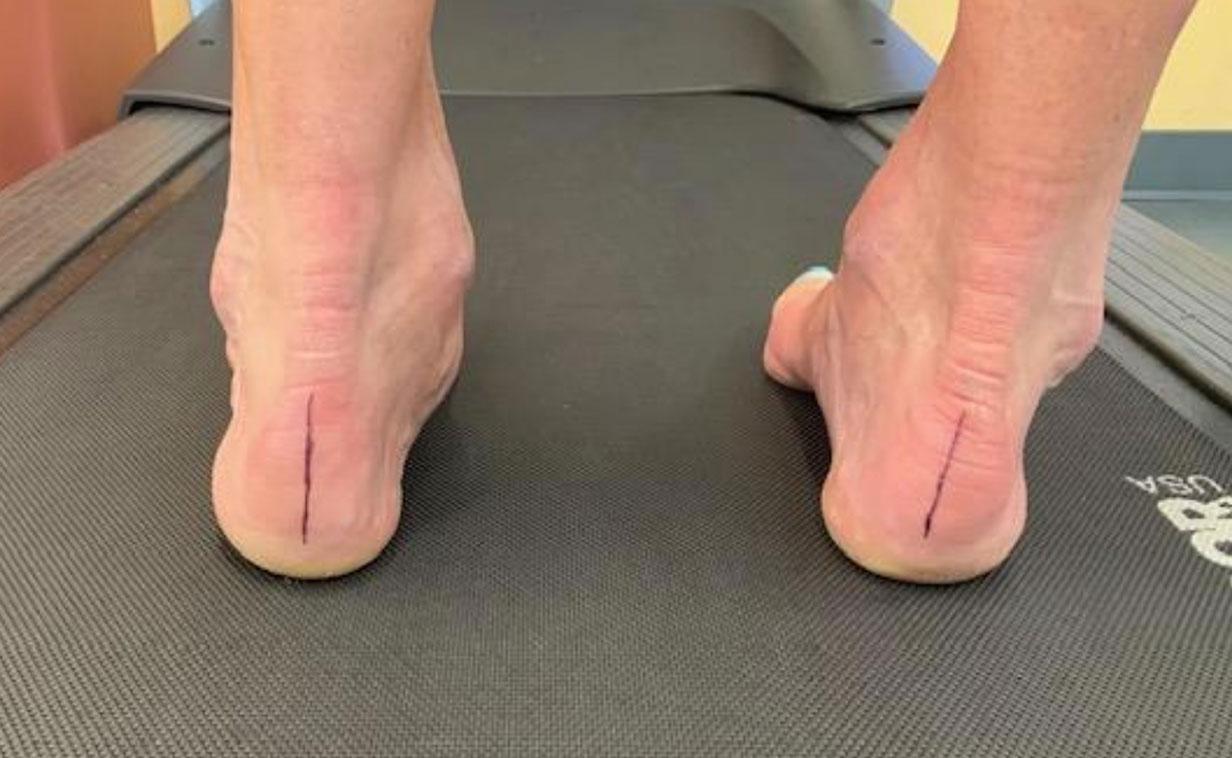In today’s post, I am excited about a wonderful conversation with Dr. Mark Warford. I am intrigued with these feet that can pronate at times and supinate at other times. Today, we will discuss the feet that present as pronators on one side and supinators on the other. This is a version of this medial/lateral instability patient and somewhat easier to treat. LOL The first image below is of these Windswept or Parallelogram Feet. Both descriptions are evenly accurate and defy symmetrical corrections for the most part.
The following came from some email correspondences with Dr Mark Warford and is based on using orthotic devices in pure Root fashion. Other treatments are available for non-Root prescribers.
Rich,
Just such a patient with both medial and lateral instability was a recent referral, a woman in her 70s. Her DX was longitudinal tears of both peroneal tendons, from the lateral malleolus distally towards the cuboid and styloid process on the right foot. Etiology was unclear but she works as a horse trainer and has had impacts to her feet from horse's hooves and falls from horse collisions.
On physical exam she was, of course, tender from the peroneal groove of the lateral malleolus, distally to the styloid and cuboid. In stance, both STJs are maximally pronated but she has asymmetry in the RCSP; left 3 degrees everted and right 1-2 degrees inverted (what I call the parallelogram rearfoot). I identified elevated right tibial varum compared to the left tibia. Checking for lateral instability by applying lateral force to the medial malleolus, the right STJ was minimally unstable, not at all on the left. Forefoot to rearfoot revealed 1-3 degrees of FF valgus B/L with a mild flexible plantarflexed first ray B/L.
As the patient had no other pedal complaints or past history other than her right peroneal tendon pains, I created her orthoses Rx with a "robbing Peter to pay Paul" focus by solely concentrating on eliminating any lateral instability in the right foot (at the risk of creating increased pronatory compensation and its potential sequelae. I told the patient that her left and right orthoses would differ in appearance significantly from each other.
The right device RX had:
1- vertical heel
2- lateral heel skive of 4 mm
3- 20 mm heel cup height on medial & lateral sides extended distally
4- flat rearfoot post with minimal bevel
5- milled 5mm poly shell {Pt weighs 180 lb.}
6- very short radius lateral forefoot platform (Root style) combined with an extrinsic forefoot valgus post, 50/50 correction for each
6- Denton modification under the lateral shell with crepe foam
7- Reverse Morton's to sulcus 5mm hard EVA
8- high medial arch fill.
On dispensing, I evaluated the RCSP with the devices and measured no change on the right, which was my goal and, there was no longer any lateral instability present.
At the one month post dispensing follow-up visit, the patient stated that her right foot feels very stable and has had a significant reduction in peroneal tendon pain and less flare-ups when over doing her activities. Both devices are comfortable with a short break-in period. She will be seen again in three months for re-evaluation.
So far, so good and the gamble is paying off. This patient received all the lateral instability tools in her orthotic design, so is a good example of having all these available options. Mark
Here Mark emphasizes how asymmetry seen in our examination should raise red flags. An old general rule that should be put out to some pasture is: “all orthos should be symmetrical to make the patient's feet function symmetrically”.
Rich,
Certainly, any type of ASYMMETRY raises so many questions about the etiology, as there's such a myriad of variables. Our eyes and minds are so accustomed to symmetry, it's a huge red flag when it doesn't occur, either in stance or gait.
I try to divide abnormalities into either congenital or developmental defects and the compensational adaptations which occur because of the defect versus those caused by the sequelae of trauma or physiological abnormalities or disease.
I suppose I like to sort out my world into three categories: things which I can fix, things I can't, and things I can't fix but I can come up with some kind of work around which will either avoid having to deal with the problem or at least ameliorate the issue which is better than doing nothing, IMHO.
Best Regards, Mark

This image shows a pronating left foot and a supinating right foot, thus the classic Windswept (as if the wind is blowing hard from left to right) or Parallelogram Feet.

Image looking at the back of two heels now. The parallelogram with here indicates an everted or pronated heel on the left, and an inverted or supinated heel on the right. Of course, the other can be true also.





